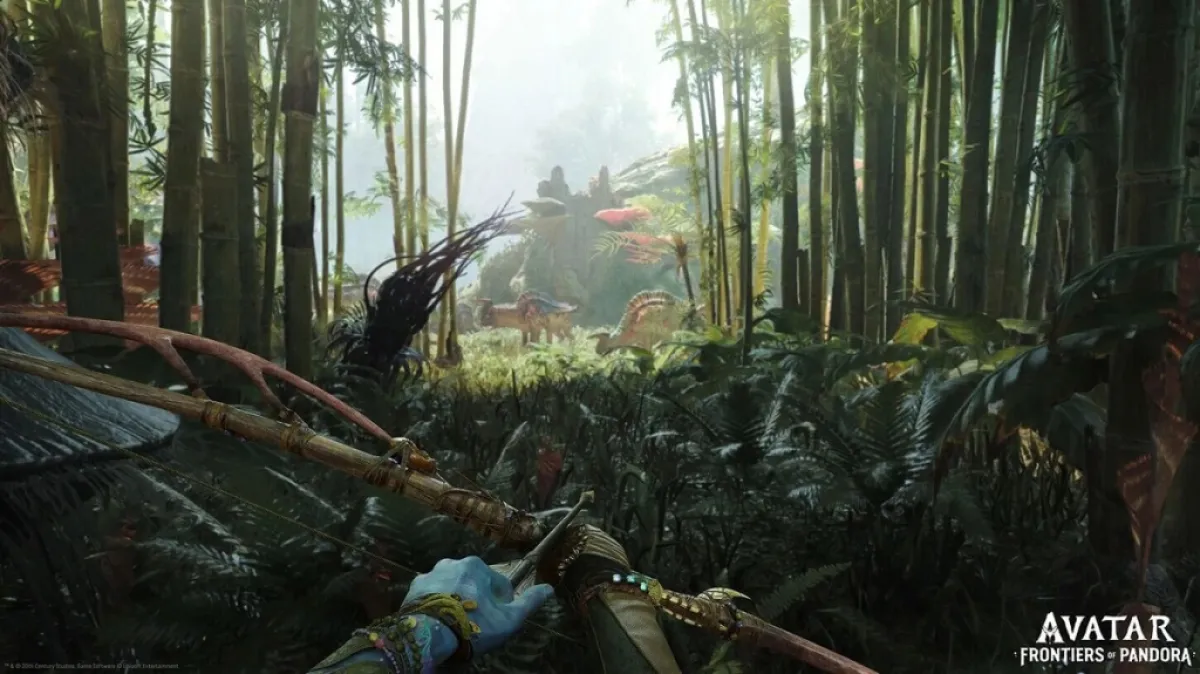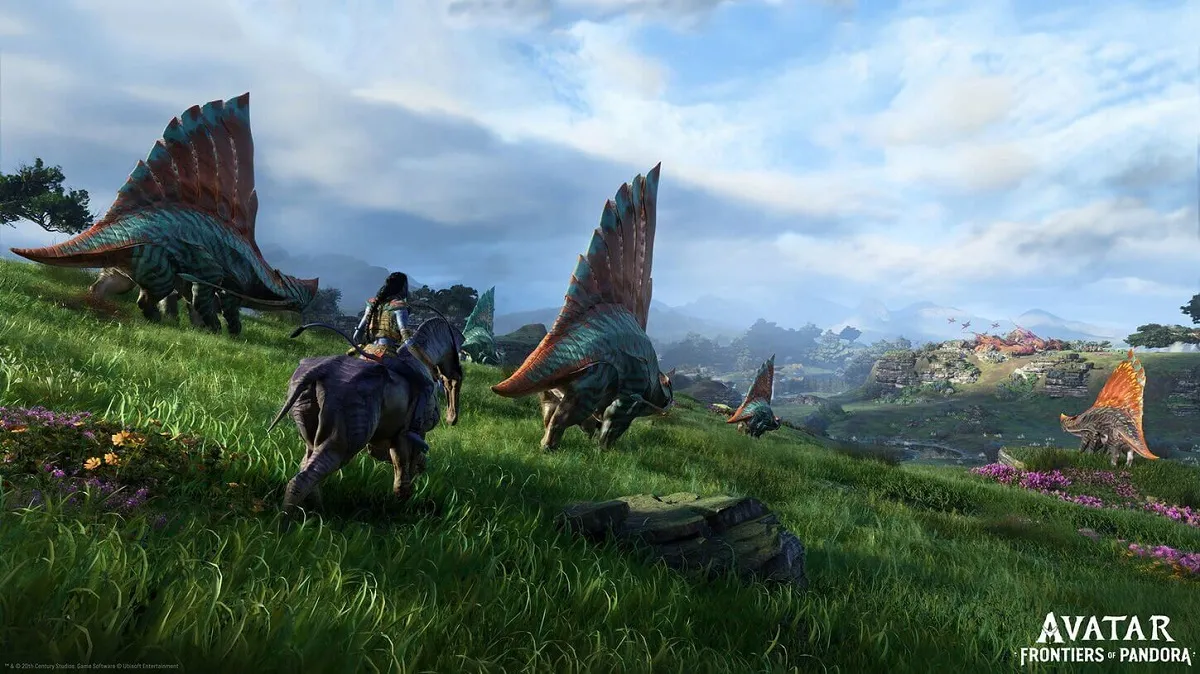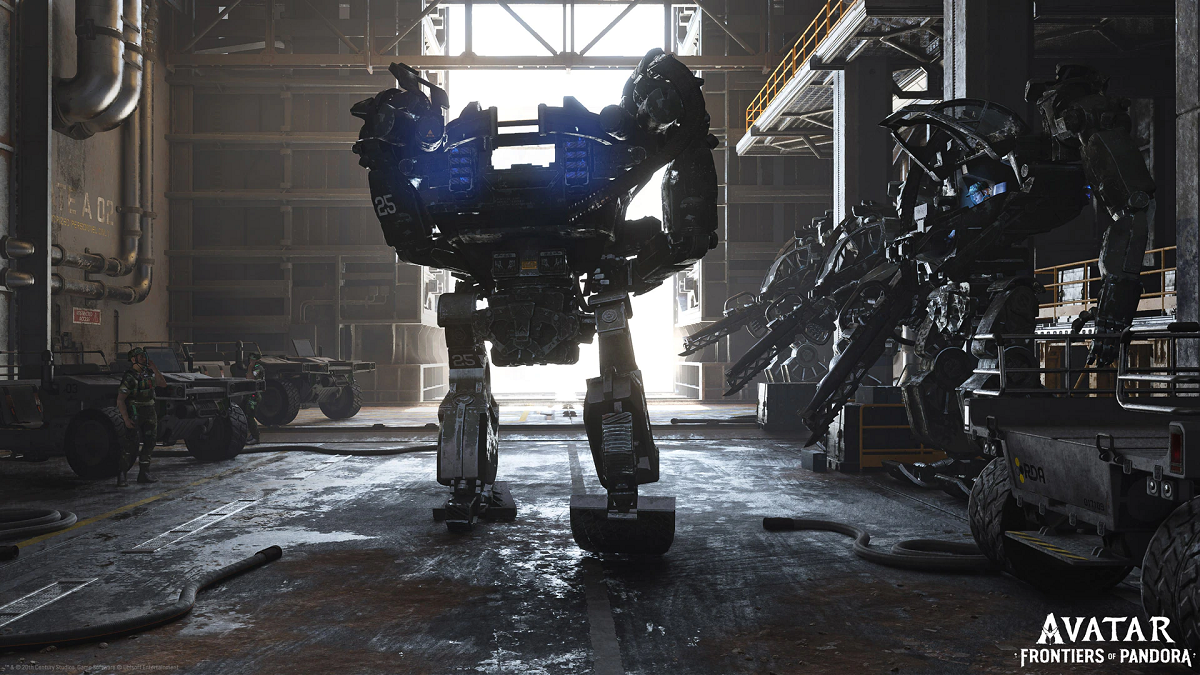As bullets rip through glass and panic settles in, the walls of the RDA facility are closing in around you in Avatar: Frontiers of Pandora.
The Sky People hunt for you and infest the remains of this torn building, ending you scampering doggedly through vents and sliding around corners. At your wits end when the walls seemed to have you in their hold, you finally see it: Freedom.
A gaping hole in the wall, sunlight cascading in. You forget about the RDA and your responsibility as one of the last living Sarentu. All that’s there is the swell of a majestical score flowing in the background as you gaze at Pandora: Its massive vines stretching far through curving trees and colorful fauna crawling over the earthy floor.
Instantly, I knew Avatar: Frontiers of Pandora struck gold. Ubisoft perfectly nailed the immersive thrill and sheer scale of the Avatar films in the game’s opening hour and, later, rose to astonishing heights as I learned the holistic ways of Na’vi tribes and bonded in the skies with Nimu, my Ikran.
You’ll experience this as one of the last Sarentu – a nomadic Na’vi tribe killed off by RDA – after being locked in a facility with other younglings from the tribe. Once saved by the resistance movement from the Avatar films, you’ll travel to discover and model the teachings of Sarentu, learning the exotic rituals of other tribes and gaining their trust to fight against the RDA.

The narrative doesn’t say anything besides RDA bad and Na’vi good, but it does feature a cast of endearing characters with real stakes and motivations you can resonate with. Much of your connection with them is sentimental, as they go through the pain of lost loved ones and invite you to share intimate moments with Pandora’s animals. The heart of the series is alive in Avatar: Frontiers of Pandora, and you feel personally involved due to the first-person perspective.
That perspective also blended well into the way you’d travel across Pandora. Like Mirror’s Edge, you’re pumping your character’s hands and sprinting into dense foliage, holding the jump button to gain some height and tapping it again to leap further. Pandora is your playground full of pole-like vines you can crawl up and mushrooms you can bounce off of.
Instead of feeling like Na’vi, you are one. You go through the challenge of meeting and naming your Ikran and ride on the back of a Direhorse through bountiful plains. You’ll hunt to gain materials for crafting equipment or cooking food with buffs and find fruit to pick with your Na’vi senses. The pace and process of earning your Na’vi stripes is a monumental journey of self-discovery that Ubisoft masterfully hit well. If you’re a diehard fan of Avatar, this game was made for you to play.

However, despite how spellbinding the experience was in Avatar: Frontiers of Pandora, its attempt to be a compelling open world game paled in comparison. Pandora swarms with vegetation, animals, RDA, and Na’vi camps everywhere, but hardly any natural open world surprises beyond the main story entice you to explore more of the land.
Related: Is Avatar: Frontiers of Pandora Canon?
Getting lost and aha moments get put on the back burner to focus on gathering objectives with frustrating mechanics and clearing out (yet another) RDA base the same way. You’ll find the same drawn-out open world cycle of blowing up camps, finding collectibles, and having too many materials to collect for your own good.
The Far Cry-like combat feels just as lackluster, with painful difficulty spikes riddled throughout the game. It pressures you to sneak and cheese enemies with specific skills/ammo types or face immediate death by a suspiciously accurate hail of bullets when in cover.
Though frankly, whenever I wasn’t fuming over these caveats, I was really enjoying the combat. In one second, you’re slinging a bomb arrow at an RDA gunship, then running and sliding with a shotgun to blow out the back of an RDA mech. Barrel rolling in the skies with your Ikran has a rule of cool to it after outmaneuvering a swarm of gunships and pumping them full of bullets or arrows.

Unfortunately, the fun can abruptly end based on how/where you engage enemies and your character level. I can’t count how many times I tried fighting against multiple opponents, only to get gunned down before I could fire a single shot. Don’t hide in the foliage of the environment, either; the RDA’s bullets and bombs will find you no matter what.
Because of this, sneaking takes priority, and building up your character’s skill tree toward stealth and crafting has a lot of value throughout Avatar: Frontiers of Pandora. Eventually, you’ll acquire your Ancestral skills of the Sarentu found across the world map, one of which allows you to rip humans from mechs and can trivialize combat like others rather than being a meaningful option.
To make matters worse, you might run into issues with your controls not working during combat. At times, the weapon/item wheel wouldn’t pull up despite pressing the button, and since you can only quick swap with two weapons, this gets very annoying when you need to shift gears to use different equipment fast. Also, even at the proper character level with good equipment, the odds still seem stacked against you to play a certain way despite the game giving you options.
If not for the bare open world content and irritating moments in and around combat, Avatar: Frontiers of Pandora would have been a stellar triumph for Ubisoft.
To be clear, it’s still an enjoyable game whenever focused on the immersive appeal that comes with being a Na’vi, but it’s hard not to acknowledge the areas where it suffers and fails to knock out what makes the world of Pandora tempting to travel beyond its untamed sights.





Published: Dec 6, 2023 06:01 am